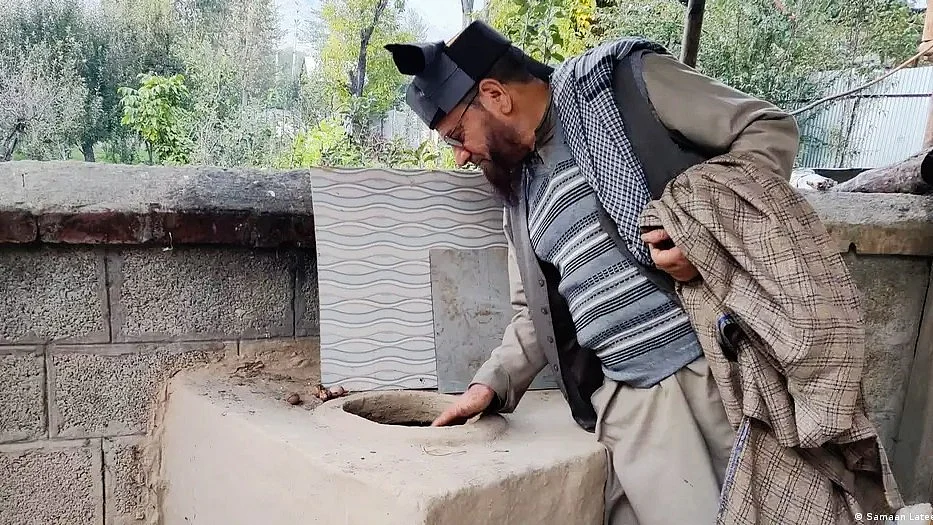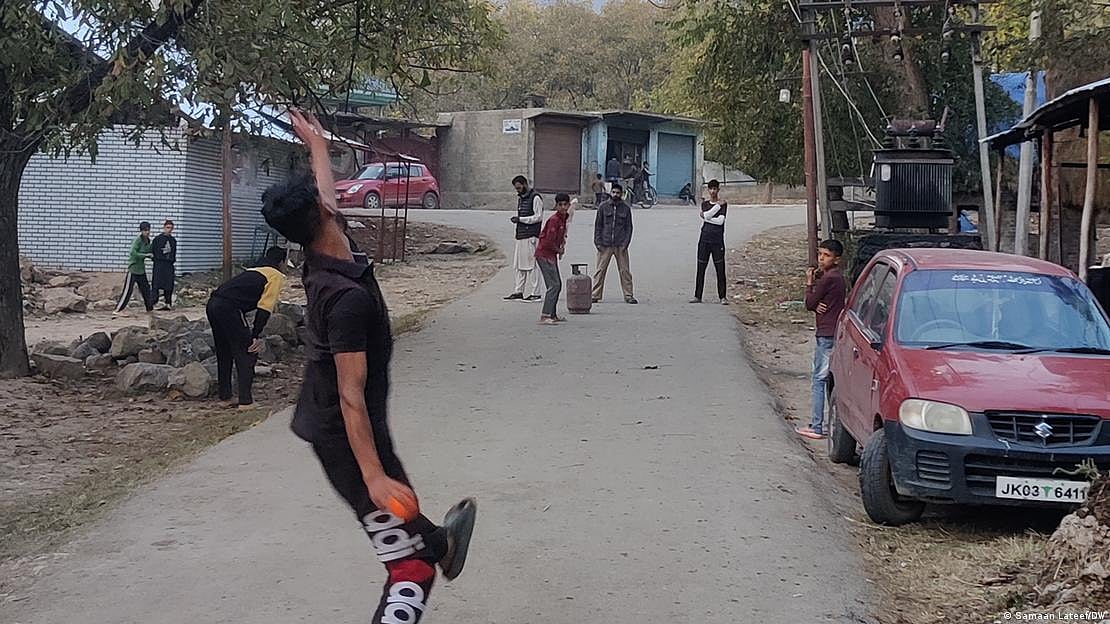Kashmir: A Pashtun village's fears over loss of identity
Locals are lamenting an inability to preserve their language and heritage. The community is also grappling with sentiments of political alienation and social exclusion

Tucked away 80 km (49.7 miles) from the bustling heart of Srinagar, Wantrag stands as a reflection of traditional Afghan life, where nearly 1,000 Pashto-speaking families fiercely uphold their cultural heritage.
The zigzag roads that weave through recently harvested paddy fields and bountiful apple orchards enter into Wantrag, perched majestically atop a hill in the Anantnag district in India-administered Kashmir.
Upon entering the village, a striking sight unfolds — houses line the banks of a water irrigation canal, walnut trees scattered throughout the landscape have transitioned to their autumn attire, and shop signs adorned with Pashto inscriptions. The air carries the shrill of autumn and aroma of Kabuli biryani — a dish consisting of steamed rice, caramelized carrots, raisins and marinated lamb.
While women might not be immediately visible, men, both young and old, are seen toiling in the apple orchards. Young boys play cricket on the winding roads while girls wearing headscarves hide behind walls.
Fears over a loss of identity
The Pashtun community's reluctance to blend with the local Kashmiri population mirrors patterns seen in global diaspora.
"Preservation of any community's identity hinges on the conservation of its language and culture, and unfortunately, we are losing both," Bashir Ahmad Khan, a retired public school teacher and a Pashto activist, attired in a traditional Pathani outfit, told DW.

In the early 1920s, Khan's grandfather Noor Khaliq ventured into Kashmir from the Allai region of Khyber Pakhtunkhwa, a province in present-day Pakistan. Khaliq initially arrived for business but chose to stay, and now, his descendants form a major part of Wantrag.
He was one of the hundreds of Pashtuns who came to Kashmir for business in the early part of the 20th century and settled here. The descendants of those immigrants have carved out their lives, while resisting cultural assimilation.
Marginalisation of the Pashto community in Kashmir
The community has grappled with sentiments of political alienation and social exclusion, a simmering undercurrent that remains prevalent among senior male members who openly condemn the treatment they perceive as discriminatory by the successive governments of India-administered Kashmir.
"Pashto has been confined to being a spoken language here, with no locally produced texts or encouragement for its promotion," Khan said, speaking with a deep-rooted concern for the preservation of his community's identity.
In 1953, the Pashto immigrants were granted citizenship followed by official recognition as one of the backward communities in India-administered Kashmir, a move to uplift the community economically and socially.
"Despite having a 12 per cent reservation in government jobs... we had minimal representation in school graduates," Khan said.
The community received a major jolt after an Indian government-sponsored survey in 1986 categorized Pashtuns under the Gujjar community, creating a sense of injustice and erasing their distinct identity, Khan said.
And four years later, the Mandal Commission or the Socially and Educationally Backward Classes Commission (SEBC) even dropped them out of the Gujjar community, leaving them without any recognition.
"Our struggle for recognition as a distinct community and reservation in jobs and university admissions will continue," Khan said.
The inception of Radio Kashmir in 1948 offered a platform for the Pashto language, featuring news and cultural programs. At that time, no other regional language was represented on Radio Kashmir, except for Pashto, Khan said. "Unfortunately, our community was kept away from modern education resulting in the gradual disappearance of Pashto programs on radio and television," he added.
"Our space and representation were taken away from us," said Khan, blaming vested interests among the Other Backward Class (OBC) groups in Kashmir for obstructing Pashto from gaining a presence on radio and television. "We used to have Pashto news and cultural programs on Radio Kashmir. But not anymore."
Cultural assimilation of Pashtuns in Kashmir
Kashmiri Pashtuns, commonly referred to as Kashmiri Pathans, predominantly reside in the districts of Ganderbal, Baramulla, Anantnag, and Kishtwar, with a population of around 40,000.
Their cultural assimilation within the broader Kashmiri population has become evident, seen through the adoption of the traditional Kashmiri garment, the Pheran, and the acceptance of intermarriages. Yet, the Pashtun community perseveres in preserving distinctive aspects of their heritage, especially language, and food. A small booklet, first of its kind, was recently published to teach Pashto to children. Even tailors are strictly directed to only produce Pathan-style clothing.
"But today, we find ourselves more integrated into Kashmiri society rather than adhering to Afghan customs. As the Pheran culture gradually became part of our lives, we now require political support to preserve our traditions," Khan said.
At a crossroads
Imbibing local Kashmiri culture while retaining certain Afghan traditions, the community finds itself at a crossroads, straddling the line between cultural adaptation and the preservation of their heritage.
Endogamous marriages were once the norm, keeping the Pashtun culture intact, but as inter-community marriages become more common, there is a growing concern that their cultural traditions may erode.
While their unique customs and traditional attire have endured over time, the Pashtun community's engagement with Kashmiri society has deepened, giving rise to a natural integration of cultures.
Yet, Khan harbors concerns about the inevitable and gradual integration of the Pashtun community into the majority Kashmiri population.
"Our kids speak Kashmiri now and community is opening up to marrying their children into Kashmiri families," said Khan, while acknowledging that, given the numerical disparity, the Kashmiri majority is bound to exert its cultural influence over time.
Follow us on: Facebook, Twitter, Google News, Instagram
Join our official telegram channel (@nationalherald) and stay updated with the latest headlines